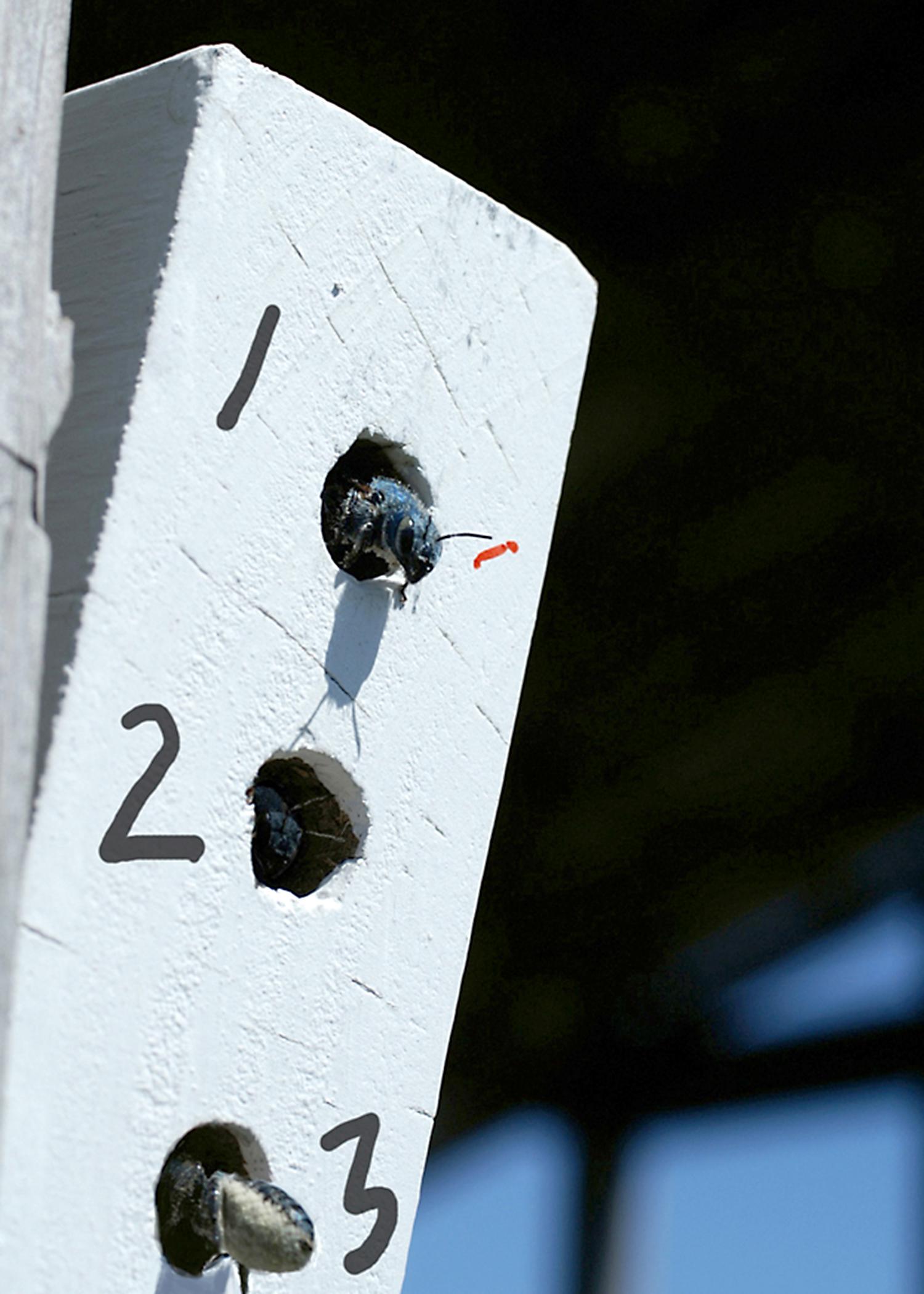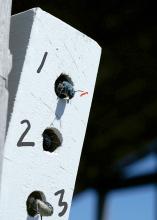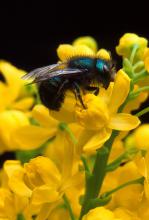Information Possibly Outdated
The information presented on this page was originally released on March 14, 2013. It may not be outdated, but please search our site for more current information. If you plan to quote or reference this information in a publication, please check with the Extension specialist or author before proceeding.
Project aims to boost native bee numbers
PEARL RIVER COUNTY –The Pearl River County Master Gardeners hope to boost the population of the Blue Orchard bee in south Mississippi with a project intended to attract this native pollinator to area backyards.
The group, a volunteer organization facilitated by Mississippi State University’s Extension Service and committed to consumer horticulture education and community service, is in the second year of the project.
“We want to encourage these bees to nest in our area and help pollinate our gardens and flowers by putting up hives,” said Herschel Rector, Pearl River County Master Gardener and bee project leader. “If we are successful, we hope to begin teaching the public how to make the hives and attract native bees to their yards.”
While honey bees are most often associated with pollination, North America is home to more than 4,000 species of native bees that impact food production and preserve ecosystems. The Pearl River County group’s goal is increasingly important as both native bees and managed honeybees experience population declines.
Blue Orchard bees are the subject of research by Blair Sampson, research entomologist with the U.S. Department of Agriculture’s Agriculture Research Service. Sampson’s research was the catalyst for the Pearl River County Master Gardener backyard bee project.
“When I heard Dr. Sampson give a presentation on backyard beekeeping I thought it was a great opportunity to benefit the bees and my garden and blueberry plants,” Rector said. “But with the entire club participating, we have a better chance of helping the bees and having our plants pollinated better.”
Jeff Harris, honeybee specialist with MSU’s Extension Service and researcher with the Mississippi Agriculture and Forestry Experiment Station, said loss of habitat and food variety are the two leading factors contributing to the drop in bee numbers.
“With more and more land needed for human food production, bee habitat is being reduced,” Harris said. “Agricultural crops are not an ideal nutrition source for bees. All bees, native and managed honeybees, benefit when several different plants are blooming at the same time.”
With habitat and diverse pollen sources shrinking, native bees will benefit from backyards designed to accommodate their needs. Native bees are very good at pollinating wildflowers and smaller food crops, which honeybees will skip in favor of larger food plots, such as row crops or large orchards.
“The drop in bee numbers is an alarming reality,” Harris said. “Losing a significant number of bees has the potential to negatively impact food production and native plant species. Native bees tend to target specific plant species because of their long, evolutionary history with native plants. If the native bees that pollinate specific plants disappear, we lose those plants too.”
Blue Orchard bees pollinate many different types of plants, but one species studied by Sampson favors blueberries. Other species of Blue Orchard bees are in high demand in certain areas of the country to help pollinate crops such as apples, pears, almonds and cherries.
Sampson hopes his research will help determine whether these bees can be managed commercially so they can work alongside honeybees.
Native bees are not as well understood as honeybees, and the Master Gardener project is helpful in understanding the habits of the bees, Sampson said.
Blue Orchard bees are easy to attract, not aggressive, and do not require special hives since they nest in tunnels left in dead wood by other insects. Holes drilled into dead wood will suffice, and can open up new habitats for bees to raise young in a cleaner, safer environment.
“Bees are competing with other insects, including wasps, for nesting space and natural nests in tree stumps or other places,” Sampson said. “Ants can pose a threat because they will sometimes raid solitary bee nests and prey on brood, but we can help protect these places by providing bees with new homes in safe locations.”
For detailed instructions on how to build a hive for Blue Orchard bees, visit http://www.LoganBeeLab.usu.edu. Click the “Products and Services” tab on the left, and then click “Build a Nesting Block.”
For more information on backyard beekeeping, contact the local Extension office.





